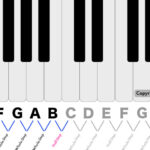Committed guitarists are familiar with the journey: refining technique, absorbing music theory, and gaining fretboard confidence. This essential skill set, what Berklee’s Guitar Department terms proficiency, forms the bedrock for playing in any style. As you progress, understanding what distinguishes one style from another becomes crucial for expanding your repertoire and forging your unique voice on the instrument.
This guide will illuminate the diverse musical paths a dedicated guitarist can explore and master.
Perhaps you’ve always been captivated by the raw emotion of the blues, or inspired by the blazing speed of metal shredding. Maybe the infectious rhythms of funk and R&B resonate with you, or the improvisational flow of jazz, or the intricate beauty of classical compositions. You might be eager to delve into uncharted styles, or even blend genres to craft your own signature approach.
Whatever your musical compass points toward, this guide will navigate you through the diverse world of Guitar Styles. We’ll explore approaches cultivated and taught by the faculty at Berklee College of Music, home to the world’s largest and most stylistically diverse guitar program. Drawing on the insights of Berklee’s 52 guitar faculty members, each a master of their craft with a unique and versatile sound, we’ll delve into the traditions that shape these styles and the skills needed to master them.
At Berklee, every guitar style holds equal value. Innovation thrives, and new styles emerge as players fuse diverse sounds. Ultimately, the path is yours to choose: What kind of guitarist do you aspire to be?
Blues Guitar
The Sound
Blues guitar stands as the wellspring for countless styles that have blossomed over the last century. Rock, jazz, funk, soul, metal, pop, bluegrass, country, and numerous contemporary guitar forms all trace their lineage back to blues influences. Blues history itself is a rich tapestry, and students at Berklee delve into its full spectrum, from pre-WWII ragtime, Delta blues, and boogie-woogie, through Chicago and Texas styles, rockabilly, country swing, hard rock, and the genre’s ongoing evolution.
 Guitarists immersed in a blues performance, showcasing the raw emotion and energy of the genre
Guitarists immersed in a blues performance, showcasing the raw emotion and energy of the genre
“I felt an immediate connection with the blues music I was initially exposed to,” says Dan Bowden, Guitar professor. “I felt the performers I listened to understood my experience in an exciting and appealing way that left me feeling good and wanting more. As a young guitarist I heard elements of blues guitar in much of the music that appealed to me and that was being played on the radio, so I was well-primed for when ‘authentic’ blues guitarists came to my attention.”
The Skills
For those dedicated to blues guitar, several core principles are essential. “The development of repertoire, vocabulary for soloing, a musical touch, phrasing, tone, pacing, and groove are all inherent to blues guitar studies at Berklee,” Bowden explains. Mastering blues also involves honing specific techniques like slide guitar, fingerstyle playing, string bending, double stops, dyads, rhythmic phrasing, and rhythm guitar grooves.
The Next Steps
Immersing yourself in the music is key to deepening your understanding of any style. At Berklee, blues guitar students can join ensembles focused on the music of legends like Robert Johnson, Muddy Waters, Howlin’ Wolf, Sister Rosetta Tharpe, B.B. King, Eric Clapton, Stevie Ray Vaughan, and many others. You can also draw inspiration from contemporary masters and Berklee faculty such as Michael Williams, Chris Bergson, and Dan Bowden.
Classical Guitar
The Sound
“The guitar has been defined as a small orchestra,” explains Berta Rojas, Associate Professor of Guitar. With such vast sonic potential at their fingertips, it’s no surprise that many guitarists are drawn to the intricate and historically rich world of classical guitar. The classical guitarist uses this “mini-orchestra” to interpret and express musical ideas, both timeless and contemporary, in captivating ways.
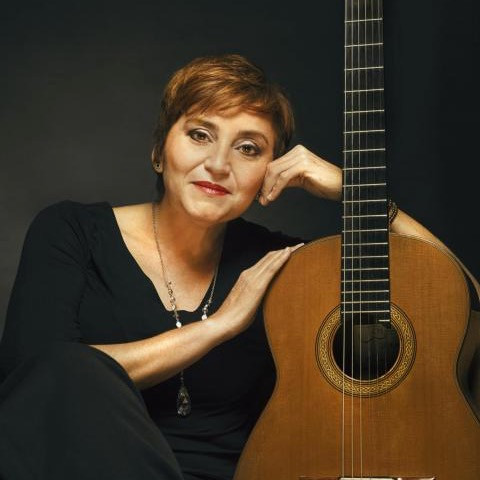 Berta Rojas, a classical guitarist, holding her instrument with focused intensity and passion
Berta Rojas, a classical guitarist, holding her instrument with focused intensity and passion
“I feel attracted to the complex writing of classical pieces; they open up to you in layers that never seem to end: always refreshing, always challenging,” Rojas shares. “Classical is a style in which the majority of the pieces, at least those written before the more experimental techniques from newer music, were thoroughly composed. Every note has been thought of. We have the job of giving life to those masterpieces, finding new meanings, new avenues in the search for our own version of them.”
The Skills
Classical guitarists must dedicate themselves to developing their tone and overall sound, along with refining both right-hand and left-hand techniques. “There are countless techniques,” Rojas notes. “Scales, arpeggios, pizzicati, tremolos, colors that go from dark and obscure sounds you can produce near the sound-hole to the clarity obtained when playing near the bridge, tambora effects when you use the guitar as a percussive instrument… There is so much to explore!”
The Next Steps
At Berklee, classical guitar studies encompass the traditional repertoire across all periods—Renaissance, Baroque, Classical, and Romantic—and delve into regional styles like Spanish and Latin American. Students also explore modern compositions and new music, collaborating with living composers, and develop their own compositional skills, improvisation, and avant-garde techniques. A strong classical foundation can also serve as a springboard into other styles such as fingerstyle, Latin music, and jazz. Explore the diverse creative paths of Berklee classical guitar faculty including Kim Perlak, Freddie Bryant, and Berta Rojas.
Jazz Guitar
The Sound
Capturing the essence of jazz in words is a challenge. This style is defined by its vast perspectives and a spirit of exploration, improvisation, and discovery. Jazz guitar students at Berklee immerse themselves in the style’s diverse traditions, including swing, bebop, manouche, Latin, contemporary, and neo-soul, learning from faculty who are masters in each of these approaches.
“Jazz in its essence is a genre-defying genre. It’s more a way of life and expression of freedom than a ‘style’ of music per se,” says David Gilmore, Associate Professor of Guitar. This freedom is particularly evident in the guitar’s role within a jazz ensemble. “What I love in particular about the role of guitar in jazz is that it is the second most common chordal instrument used, after piano of course. We have an important role to play in the shaping of the rhythm section sound and feel, and the ability to leap out and support the melody and improvise.”
The Skills
“One of the most important techniques to mastering jazz guitar is in the area of good sound production—being able to make your notes sound strong and swinging,” explains Gilmore. “Many factors go into this, like studying a variety of picking techniques, working on timing between your fretting and picking hands, and the efficiency of the pathways you choose on the fretboard as you execute certain phrases, melodies, et cetera. We often spend so much time working on just being able to play a musical piece without paying much attention to whether it actually sounds or feels good.”
Jazz guitar studies at Berklee also include labs exploring chord voicing, modern harmony, chord soloing, solo performance, polyrhythm and polymetrics, linear development, and spontaneous composition.
The Next Steps
Jazz guitarists embark on a continuous journey of self-discovery, developing their unique voice by immersing themselves in the traditions of improvisation, tone, groove, and technique. Berklee’s roots are deeply embedded in jazz, and its history intertwines with the evolution of jazz music itself. Students have access to this rich legacy through generations of faculty expertise, small groups dedicated to specific artists—Django Reinhardt, Freddie Green, Wes Montgomery, Pat Martino, John Scofield, and more—and ensembles exploring standards, as well as Brazilian, Latin, and contemporary jazz. Discover the varied paths of jazz masters through Berklee faculty like Larry Baione, Sheryl Bailey, Tim Miller, Cecil Alexander, and David Gilmore.
Rock Guitar
The Sound
Defining “rock music” with a single set of sonic traits is nearly impossible. Rock guitar encompasses a vast portion of modern popular music, constantly evolving and merging with other styles and sounds. Rock guitar students at Berklee trace this evolution from early rock and roll through rockabilly, country swing, hard rock, metal, progressive rock, jam band, and the ever-expanding landscape of subgenres.
For Jon Finn, Professor of Guitar, the essence of rock guitar often boils down to the magic of tone. He recalls hearing The Animals’ “House of the Rising Sun” for the first time as a pivotal moment, solidifying his love for rock: “That guitar tone felt like the earth opened up at the time (even if it sounds a bit cheesy by today’s standards).”
The Skills
For rock guitarists, the pursuit of the perfect tone—starting with technique and then sculpting sound with pedals, amps, and instruments—is integral to the art form. “You’ll spend a lot of time messing with ways to get something to sound a certain way,” Finn says. However, he emphasizes that instrumental mastery, work ethic, and effective time management are crucial. “The whole idea of ‘rock guitarist who doesn’t practice and is just magically able to play whatever they feel’ is a myth.” Berklee rock guitar students refine techniques like tapping, hybrid picking, Travis picking, hammer-ons and pull-offs, and explore diverse approaches to rhythm guitar, improvisation, transcription, and composition.
The Next Steps
Studying the works of rock guitar icons provides invaluable insight into the sonic and compositional approaches that transform ideas into classic songs. Berklee rock guitar students analyze artists ranging from The Beatles, Jimmy Page, Jimi Hendrix, and The Allman Brothers to Joni Mitchell, Jeff Beck, Steve Vai, Tosin Abasi, and System of a Down. Explore the diverse rock sounds represented by Berklee faculty such as Joe Musella, Robin Stone, Don Lappin, Scott Tarulli, and Jon Finn.
Funk and R&B Guitar
The Sound
Rooted in catchy hooks and harmonies drawing from jazz, gospel, and blues, funk and R&B are “the people’s music,” explains Thaddeus Hogarth, Professor of Guitar. “Everyone knows the music—the Isley Brothers, Motown, EWF [Earth, Wind & Fire], Stevie, Aretha, Prince…. You can play it with an acoustic guitar, or you can play it in the context of a large band. If you sit on a park bench and start singing and playing R&B tunes, you have an instant audience…. It was the soundtrack for the African American experience and the American experience at large.”
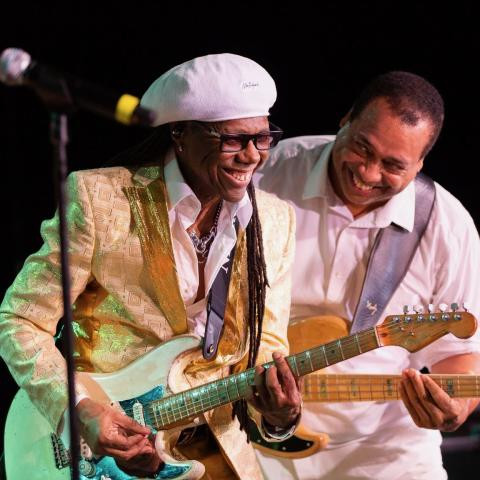 Nile Rodgers, a funk guitar icon, performing at Berklee's Encore Gala, radiating energy and passion
Nile Rodgers, a funk guitar icon, performing at Berklee's Encore Gala, radiating energy and passion
Hogarth emphasizes the communal nature of funk and R&B, from the way instrumental parts interlock to form the arrangement to the way each player contributes to the groove and respects the song’s essence. Similar to jazz, funk and R&B guitarists often play a key role in shaping the band’s harmony and rhythm, while also having opportunities for solo expression.
The Skills
“Having a solid sense of time and good right-hand rhythm technique (keep the right hand moving, whether or not you’re hitting the strings on a strum) is a good foundation for someone interested in playing R&B/funk,” Hogarth states. “It is essential to learn how to listen to the rest of the band and be aware of the contribution that your part is making to the song. That will help you ‘lock in’ to the groove.” Essential techniques for funk and R&B guitarists include rhythm guitar grooves, single-note rhythms, and improvisation.
The Next Steps
Funk and R&B guitar studies at Berklee involve learning from genre pioneers like Jimmy Nolen, Johnny “Guitar” Watson, Eddie Hazel, Nile Rodgers, Prince, and Isaiah Sharkey. Students also participate in small ensembles, mastering essential repertoire from James Brown, Michael Jackson, Funkadelic, Sly and the Family Stone, The Meters, Erykah Badu, D’Angelo, and many more. Related genres like neo-soul, hip-hop, and jam band are also explored. Delve deeper into funk and R&B by studying the work of Berklee faculty such as Jim Peterson, Jeffrey Lockhart, Tomo Fujita, and Thaddeus Hogarth.
Hard Rock and Metal Guitar
The Sound
Hard rock and metal guitar styles offer a potent blend of power and precision, often becoming a way of life for dedicated players. “I’ve been immersed in metal guitar for as long as I can remember. I eat, breathe, and sleep it,” says Joe Stump, Associate Professor of Guitar. “I love the fact that it’s extremely technically demanding; the high-speed, high-volume aspects of it; and that it takes a daily commitment to excellence to make a career out of it.”
Berklee’s hard rock and metal guitar curriculum encompasses a wide spectrum of subgenres, including shred, neoclassical, heavy metal, prog metal, death metal, black metal, and math rock.
The Skills
Heavy rock guitar styles often demand specialized techniques like tapping and sweep picking. Mastering these and other right- and left-hand techniques requires extensive practice, starting at slower tempos and gradually increasing speed to achieve the mesmerizing sounds characteristic of metal riffs and solos. “It’s not a style of playing you just dabble in,” Stump emphasizes, “you’re either completely committed or you’re not. To play at a high technical level requires total discipline and dedication, and a true love of craft. While metal has many different subgenres, just about all of them require strong command of the instrument and extreme technical proficiency.”
The Next Steps
Technique is only one facet of heavy guitar styles. Through private lessons, labs, and ensembles, Berklee guitar students learn to channel their technical skills to express their individual style and voice. They refine their sound by experimenting with pedals and amps, learn to transcribe guitar parts, compose their own music, improvise with confidence, and interpret even the most technically challenging pieces with emotion. Explore the world of hard rock and metal guitar styles with Berklee faculty members Shaun Michaud and Joe Stump.
Fingerstyle Guitar
The Sound
Fingerstyle guitar, drawing from both classical and folk traditions, is less a specific genre and more an approach to playing with the fingers instead of a pick. It surfaces in diverse musical contexts, from Latin and Nashville to jazz, modern songwriting, blues, Brazilian, and Afro-pop, in both solo and ensemble settings.
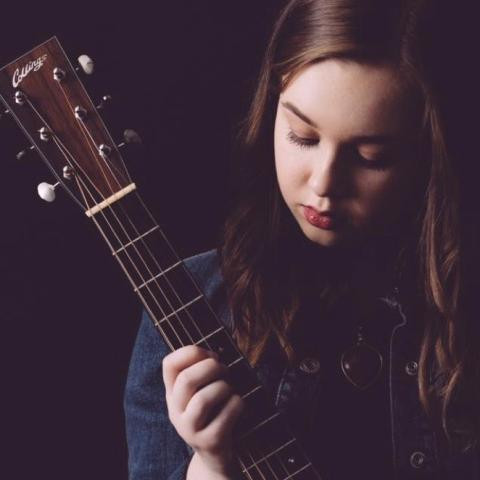 Emma Moseley, a fingerstyle guitarist, demonstrating delicate technique and expressive playing
Emma Moseley, a fingerstyle guitarist, demonstrating delicate technique and expressive playing
“I feel I can be more expressive when I am in direct contact with the instrument,” says fingerstyle guitarist Abigail Aronson, Professor of Guitar. “Changes in nuance, inflection, volume, tone…are right at my fingertips.” Beyond the control it offers, Aronson is drawn to fingerstyle’s aesthetic possibilities for songwriting: “Fingerstyle textures—arpeggios, patterns, counterpoint—make a beautiful base for a vocal melody. Music for voice and guitar—from John Dowland to Benjamin Britten to James Taylor—speaks to me like nothing else.”
The Skills
“Tone is probably the most important and essential technical issue to explore and master,” Aronson explains. “I come at it from a classical approach, but with any style, the greater issues—things like beautiful round sound, expressiveness and nuance, volume without tension—are the same. What you are able to get just from your hands, aside from amplification or other super imposed effects, is key.”
With any style, the greater issues—things like beautiful round sound, expressiveness and nuance, volume without tension—are the same.
—Abigail Aronson, Professor of Guitar
The Next Steps
The realm of fingerstyle guitar is vast and varied. Berklee students are encouraged to explore the genres and artists mentioned above, as well as fingerstyle work by artists like The Beatles, Joni Mitchell, Chet Atkins, Lenny Breau, and Jerry Reed. Many fingerstyle guitarists also pursue arranging and composing their own pieces in private lessons and labs, or developing improvisation skills in solo and ensemble contexts. Learn more about fingerstyle playing and hear examples from Berklee faculty members Lyle Brewer, Guy Van Duser, Dan Bowden, Freddie Bryant, Bobby Stanton, and Abigail Aronson.
Fusion Guitar
The Sound
Berklee has been a central hub for fusion since its emergence in the late 1960s, with alumni like John Abercrombie and faculty member Pat Metheny shaping the genre’s early sound. The college remains at the forefront of this constantly evolving style. Fusion, as its name suggests, blends elements of blues, rock, jazz, funk, Latin, Afro-pop, pop, and world music influences into sonic palettes as diverse as the players themselves.
“The term ‘fusion’ is very broad,” explains Tim Miller, Professor of Guitar, highlighting the style’s appeal. “In this general genre of music I am able to incorporate virtually any element that I choose, in any way that I like. I am free to create.”
The Skills
Fusion’s fluid nature and diverse roots demand curious and versatile guitarists. Fusion guitar students at Berklee might focus on advanced jazz harmony and modal innovations, Brazilian and Latin comping and solo styles, improvising and composing in variable meters, and utilizing electronic effects to shape their tone.
“The music that I choose to play involves a great deal of improvisation,” Miller says. “Improvised music provides endless pathways for musical interaction that evolves in real time. This demands that the musician be an active listener in the moment.”
The Next Steps
Learning from the innovators of fusion is crucial. Berklee offers ensembles that perform the music of artists ranging from Mahavishnu Orchestra, Pat Metheny, Mike Stern, and Allan Holdsworth to Jeff Beck, Animals as Leaders, and Snarky Puppy. Explore diverse approaches to fusion guitar from Berklee faculty members Rick Peckham, Julien Kasper, Norman Zocher, Colin Sapp, and Tim Miller.
Modern Improvisation, Microtonal, and Avant-Garde Guitar
The Sound
All guitarists share a passion for creation, drawn to sound and eager to learn techniques that push music forward. Avant-garde music and spontaneous composition offer inspiration to all players. Studying improvisation, writing, and arranging based on atonal (music without a tonal center), polytonal (music with multiple tonal centers), and microtonal (music using intervals smaller than a semitone) systems, alongside traditional Western diatonic systems and the authenticity of other styles, is highly beneficial.
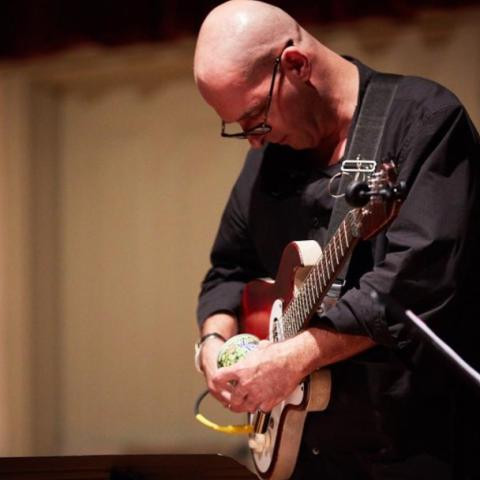 David Tronzo, an avant-garde guitarist, playing with intense focus and innovative technique
David Tronzo, an avant-garde guitarist, playing with intense focus and innovative technique
David Tronzo, Professor of Guitar, clarifies that the appeal isn’t solely in experimentation: “The avant-garde per se is not the attraction; my investment is in spontaneously composed music of any type, whether solo, duo, or ensemble…. All of the players involved are functioning as leaders, collectively building the aggregate piece in real time, no eraser…. When done with great skill and care, the audience is treated to new music, powerfully wrought and freshly minted; it likely took them to places that they did not know how to request to go, and they experienced the true power of music, the deep power beyond emotion and excitement.”
The Skills
This approach values tone as a structural element, requiring players to cultivate their sound through individual technique development. “I was devoted to developing a new set of sounds and techniques in my approach to the guitar involving the slide,” Tronzo explains, “and I alone had to work these out as they did not exist in any form prior. They are of no use to anyone else, of course!”
However, Tronzo also emphasizes “the super-fundamentals: all of the scales, arpeggios, dyads, triads, right- and left-hand techniques, control of sound, compositional strategies, and familiarity with a huge range of global musics…I have to know my instrument thoroughly.”
The Next Steps
Berklee guitar students can join the Guitar Department’s Spontaneous Composition Club or explore microtonal music through the college’s Planet Microjam institute. These explorations cultivate personal sound, and avant-garde lessons can enrich all other styles. Hear the possibilities in projects from Berklee faculty David Fiuczynski, David Tronzo, and the Perlak/Tronzo Duo (Kim Perlak and David Tronzo).
Studio and Session Guitar
The Sound
Session work attracts players who thrive on variety and challenge, where style, genre, and medium constantly shift. Session guitarists create and arrange music for television, film, songs, and diverse projects, embracing musical versatility and leaving their mark on numerous productions.
“The guitar has an incredibly wide range, sonically and stylistically, that can be useful in a huge variety of settings,” says Randy Roos, Professor of Guitar. “As the owner of a small recording studio, I often play various guitars on a client’s projects. This could be anything from a simple folk song to an abstract soundscape…I’ve played on major artists’ records, advertising jingles, film and TV scores, songs for children’s records…. I also spent years composing and producing scores for PBS documentaries, many of which featured my guitar…. In the end it’s wonderfully satisfying to walk out of a session knowing that you’ve contributed something beautiful to a project, regardless of the musical direction.”
The Skills
Session work demands both technical skill and a specific mindset. Roos explains, “The mindset we need…is to be completely free of any agenda, any desire to feature a particular musical strength we may have, and instead do everything we can to serve the project, at all costs to our own ego.”
Practically, Berklee students pursuing session work must become versatile, adaptable, and quick to learn. They focus on sight-reading and interpreting notation and charts, expanding their sonic palette and techniques, honing improvisation skills, and learning to arrange, write, and spontaneously compose parts for diverse settings.
The Next Steps
Berklee students building a session portfolio might collaborate with the Film Scoring or Music Production and Engineering departments. Learning to engineer, record, and produce their own sessions is also vital, especially in the era of remote recording. Exploring diverse styles broadens their range. “In addition to being a player,” Roos says, “you also have to be an orchestrator. It’s very common for a project leader to be unsure of specifically what they want you to do. It’s up to you to come up with a concept and a texture that will work…. So it’s logical that an understanding of a wide spectrum of musical genres would be quite beneficial to a studio musician.” Numerous Berklee guitar faculty members have contributed to studio projects, including Nate Radley, David Tronzo, Jane Miller, Abigail Aronson, and Randy Roos.
The Choice Is Yours
Every guitarist embarks on a personal journey to discover their authentic sound. In this sense, the number of guitar styles equals the number of guitarists. The exciting path ahead involves drawing inspiration from these traditions and genres, incorporating elements into your playing, seeking mentors and resources to build instrumental proficiency and stylistic authenticity, and dedicating years of work to forge your unique voice.

